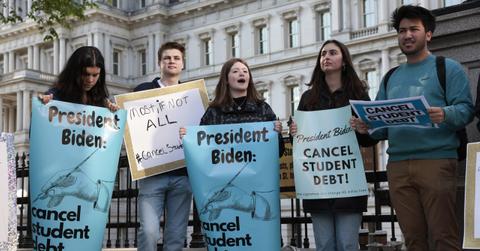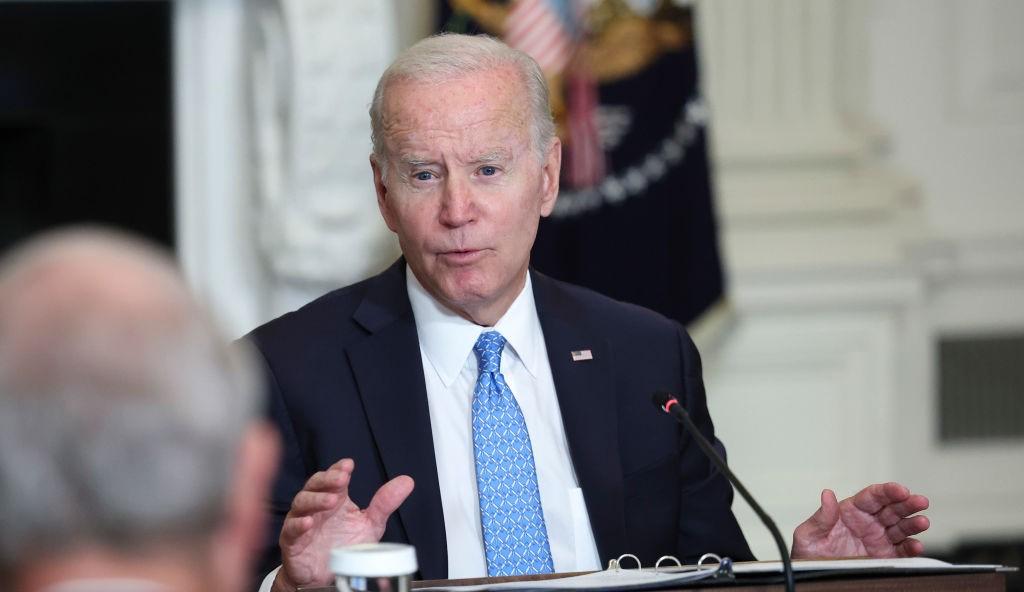Student Loan Forgiveness Will Cost Hundreds of Billions of Dollars, Sparking Debate
Student loan forgiveness is coming with a big price tag. Here’s how much the program will cost the U.S. government as well as the average American.
Sept. 27 2022, Published 1:16 p.m. ET

After years of waiting, student loan forgiveness is approaching. When all is said and done, an estimated 42.4 million of the 45 million total student loan borrowers in the United States will receive some sort of forgiveness — and that won't come without some costs.
The estimates are out, so here’s the scoop on the price tag for the student loan forgiveness program that’s coming up.
The Congressional Budget Office explained how much the student loan forgiveness will cost.
According to the Congressional Budget Office (CBO), President Biden’s student loan forgiveness program will cost more than $420 billion. Most federal student loan borrowers will be eligible for up to $10,000 in student loan forgiveness.
With about 42.4 million borrowers considered to be eligible for forgiveness, the number really adds up.
"The cost of outstanding student loans will increase by $20 billion because an action suspended payments, interest accrual, and involuntary collections from September 2022 to December 2022. [...] After accounting for those suspensions, CBO estimates that the cost of student loans will increase by about an additional $400 billion in present value as a result of the action canceling up to $10,000 of debt issued on or before June 30, 2022, for borrowers with income below specified limits and an additional $10,000 for such borrowers who also received at least one Pell grant," the CBO wrote in an analysis published on Monday, Sept. 26.
Student loan forgiveness is one of Biden’s most expensive plans — lawmakers are torn on its efficacy.
Outside of Biden’s American Rescue Plan at the start of his presidency, student loan forgiveness is up there with the priciest budget plans during his term so far.
Largely-GOP opponents are using the new data to suggest the student loan forgiveness plan is a waste of money. Rep. Virginia Foxx (R-N.C.) wrote in a statement it “shows this administration has lost all sense of fiscal responsibility” and is “just the tip of the iceberg.”
On the other side of the fence, it proves the U.S. government is capable of bailing out everyday working Americans, not just corporations.
Majority Leader Chuck Schumer and Sen. Elizabeth Warren (D-Mass.) wrote in a joint statement, “We don’t agree with all of CBO’s assumptions that underlie this analysis, but it is clear the pandemic payment pause and student debt cancellation are policies that demonstrate how government can and should invest in working people, not the wealthy and billionaire corporations.”
Student loan forgiveness may increase the federal deficit over time, but it isn't clear to what extent (and whether other budgetary plans that include deficit closure could combat it).
The Wharton Budget Model from University of Pennsylvania scholars tells us forgiveness could add $519 billion to the federal deficit over the next 10 years.
The government could recoup the costs over this time, although many believe the rate of federal spending is unsustainable.
Whatever the case, one thing is clear: The student loan forgiveness plan is expensive. As for whether it’s worth it, many alumni saddled with debt may say yes, especially as inflation and rising Federal Reserve interest rates eat into their assets.

